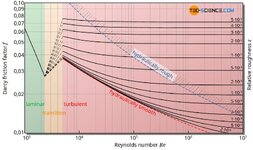-
1
- #1
Javier Sanchez
Mechanical
- Feb 12, 2025
- 5
Dear all,
I need to design a system as depicted in the attached image, where I need to feed a fix flow of nitrogen to one membrane under partial vacuum conditions. The setup considers a nitrogen source from bottles and a vacuum pump at the end of the line. The idea is to use a pressure regulator and a flow meter, to feed nitrogen at 0.5 bar and 0.4 Nm3/h, and that the vacuum pump can decrease the pressure in the membranes further to 65 mbar(a). I would like to know how to calculate the pressure profile along the line, from the pressure regulotor to the pump, to know the pressure at which the membrane would be working. Do you know any suitable formula for such setup that can consider pressure losses and the curve of the pump? Thanks in advance!
I need to design a system as depicted in the attached image, where I need to feed a fix flow of nitrogen to one membrane under partial vacuum conditions. The setup considers a nitrogen source from bottles and a vacuum pump at the end of the line. The idea is to use a pressure regulator and a flow meter, to feed nitrogen at 0.5 bar and 0.4 Nm3/h, and that the vacuum pump can decrease the pressure in the membranes further to 65 mbar(a). I would like to know how to calculate the pressure profile along the line, from the pressure regulotor to the pump, to know the pressure at which the membrane would be working. Do you know any suitable formula for such setup that can consider pressure losses and the curve of the pump? Thanks in advance!


